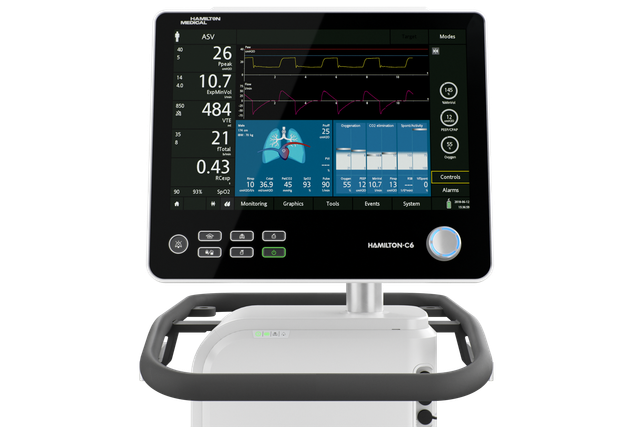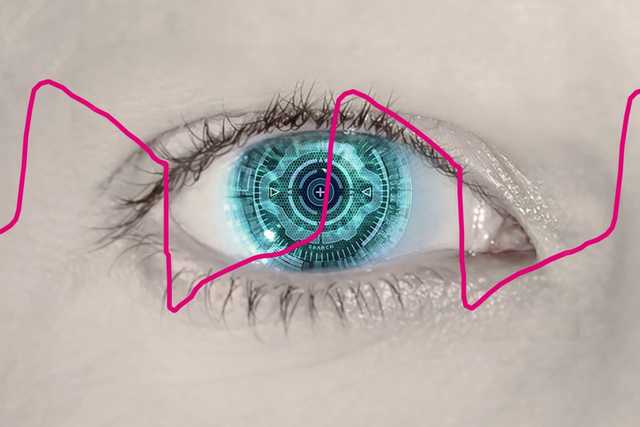
Comment détecter des asynchronies ? Un œil digital
L'œil exercé d'un expert de la ventilation est capable de détecter des asynchronies en analysant les profils des formes d'ondes de débit et de pression.
Cependant, l'expert ne peut pas toujours être au chevet du patient et l'état du patient peut changer d'un cycle à l'autre.
C'est là qu'intervient l'IntelliSync+. Cette technologie imite l'œil de l'expert pour identifier les signes des efforts du patient (déclenchement) ou de relâchement (cyclage) sur la forme d'ondes.
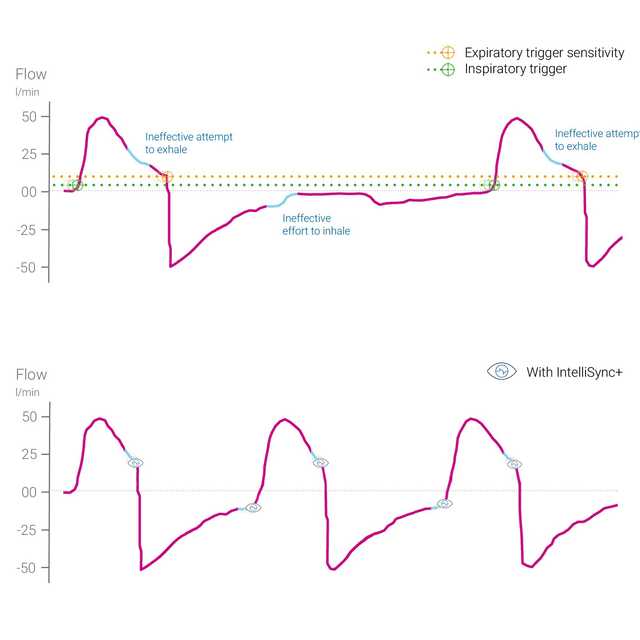
Comment cela fonctionne‑t‑il ? Principes de l'IntelliSync+
L'IntelliSync+ analyse en continu des signaux de formes d'ondes plusieurs centaines de fois par seconde. L'IntelliSync+ peut alors détecter immédiatement les efforts du patient et initier l'inspiration et l'expiration en temps réel, remplaçant ainsi les réglages de déclenchement classiques de l'inspiration et de l'expiration.
Pour une flexibilité optimale, vous pouvez choisir d'activer l'IntelliSync+ pour le déclenchement inspiratoire ou le déclenchement expiratoire, ou bien les deux.

Les asynchronies sont‑elles vraiment un problème ? Focus sur les preuves de réussite
Des asynchronies patient‑ventilateur importantes sont détectées chez environ 25 % de l'ensemble des patients ventilés mécaniquement (
L'analyse des formes d'ondes est une méthode fiable, précise et reproductible permettant d'évaluer l'interaction entre le patient et le ventilateur. L'automatisation de cette méthode peut permettre un monitorage continu des patients ventilés et/ou améliorer le déclenchement des cycles et le cyclage (
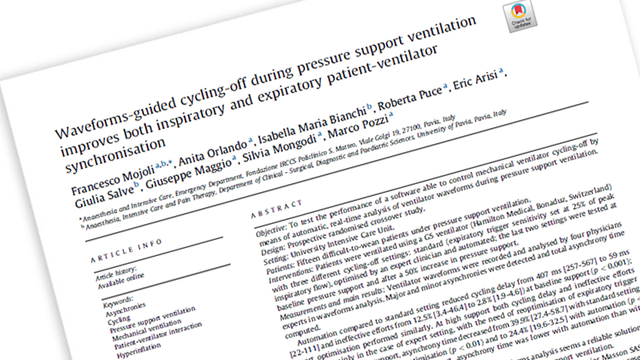
Cyclage automatisé pour améliorer la synchronie patient‑ventilateur
Mojoli F, Orlando A, Bianchi IM, et al.
Une étude récente a montré que la commande automatisée du cyclage d’un ventilateur basé sur l’analyse en temps réel des formes d’ondes fournissait un moyen fiable d’améliorer la synchronisation chez les patients ventilés mécaniquement.
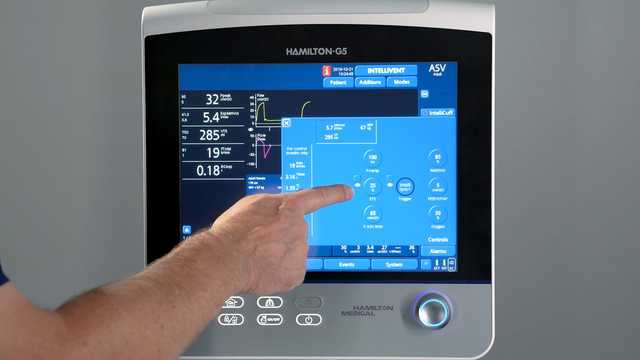
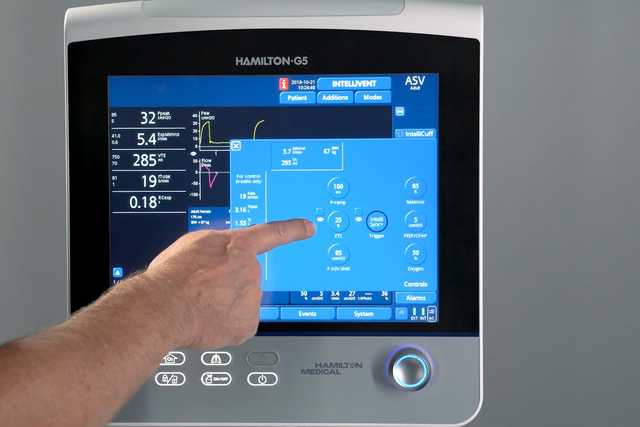
Comment l'utilisez‑vous ? Configuration et utilisation de l'IntelliSync+
L'IntelliSync+ est une méthode totalement non invasive qui ne nécessite ni matériel ni accessoire supplémentaire. Il vous suffit d'activer l'option sur votre ventilateur pour l'utiliser en mode de ventilation invasive ou non invasive sur des patients adultes et enfants.
Comme l'IntelliSync+ peut également être combiné avec des déclenchements classiques, vous pouvez choisir de l'utiliser pendant l'inspiration, l'expiration, ou les deux.

Bon à savoir ! Supports de formation sur l'IntelliSync+

Apprendre à repérer les asynchronies courantes ! Carte de référence gratuite
Notre carte de référence des asynchronies fournit un aperçu des types d'asynchronies les plus courantes, leurs causes et comment les détecter.
Disponibilité
L'IntelliSync+ est disponible en option sur le HAMILTON‑C6 et le HAMILTON‑G5, et comme fonctionnalité standard sur le HAMILTON‑S1.
Références
- 1. Thille AW, Rodriguez P, Cabello B, Lellouche F, Brochard L. Patient‑ventilator asynchrony during assisted mechanical ventilation. Intensive Care Med. 2006;32(10):1515‑1522. doi:10.1007/s00134‑006‑0301‑8
- 2. Tassaux D, Gainnier M, Battisti A, Jolliet P. Impact of expiratory trigger setting on delayed cycling and inspiratory muscle workload. Am J Respir Crit Care Med. 2005;172(10):1283‑1289. doi:10.1164/rccm.200407‑880OC
- 3. Blanch L, Villagra A, Sales B, et al. Asynchronies during mechanical ventilation are associated with mortality. Intensive Care Med. 2015;41(4):633‑641. doi:10.1007/s00134‑015‑3692‑6
- 4. Mojoli F, Iotti GA, Torriglia F, et al. In vivo calibration of esophageal pressure in the mechanically ventilated patient makes measurements reliable. Crit Care. 2016;20:98. Published 2016 Apr 11. doi:10.1186/s13054‑016‑1278‑5


